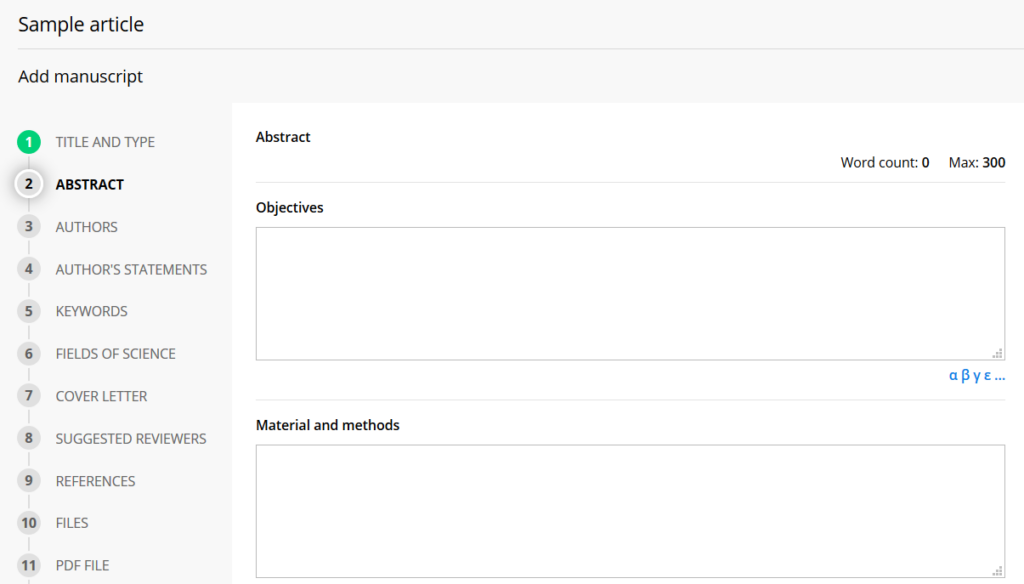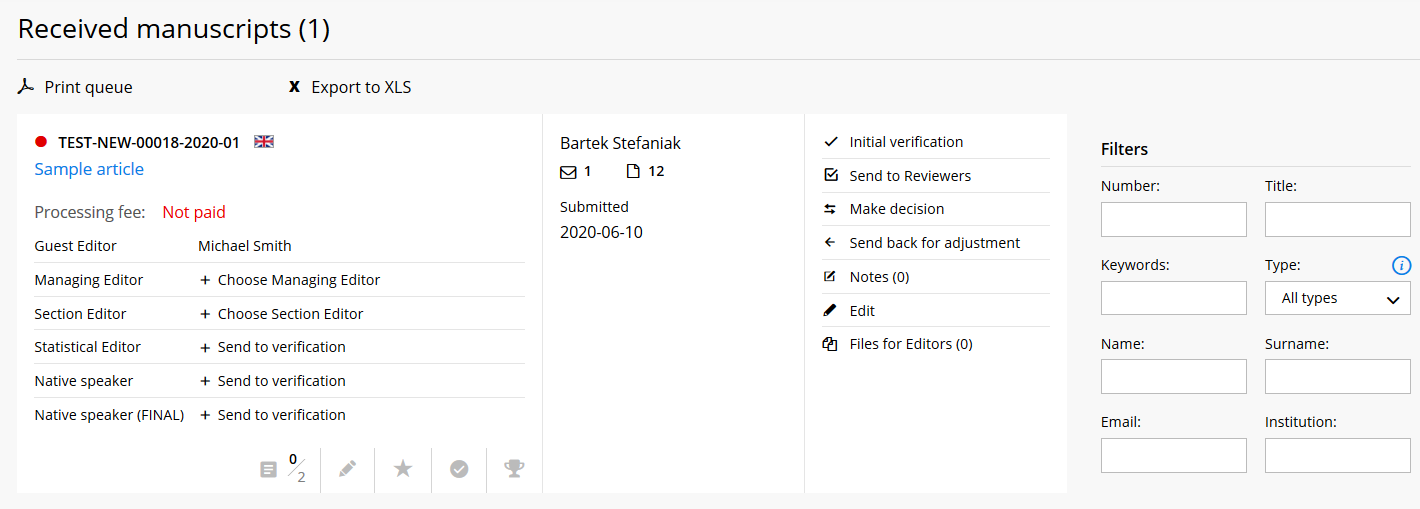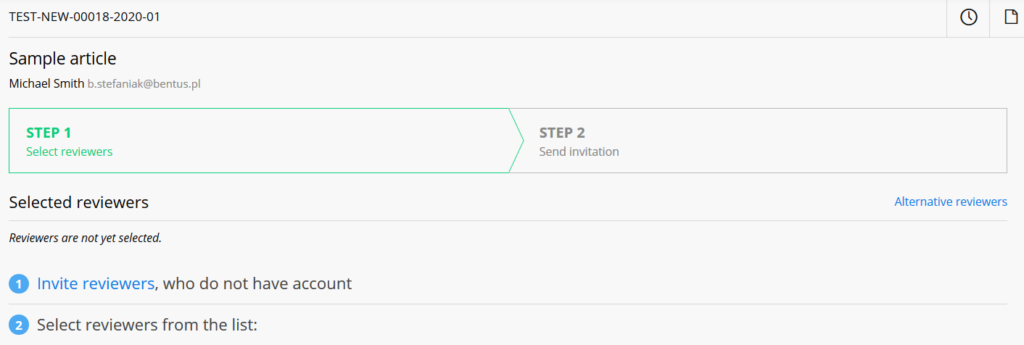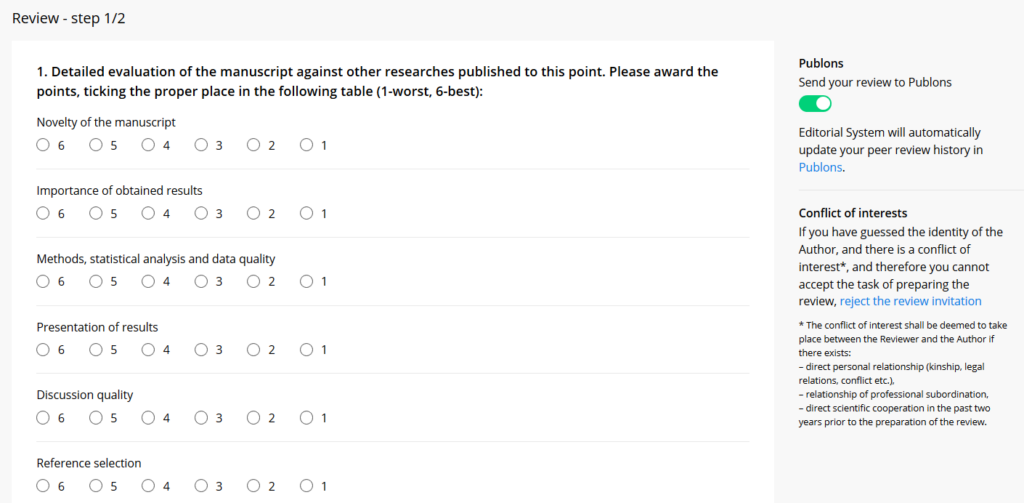How the Editorial System Works
1. Logging in or Creating a New User Account (Author Area)
The first step for every Author before submitting their manuscript to the Editorial Office is to create a new account or log in if the Author has previously created an account.

2. Adding a New Manuscript (Author Area)
The Author adds a new manuscript and then fills in all the associated information such as: title, type of work, authors and their affiliations, abstract, keywords, fields characteristic for the journal, cover letter, comments for reviewers, suggestion of reviewers. The Author also attaches files: article content (DOC, DOCX, RTF, PPT, PPTX) and optionally tables and figures. Necessary steps to complete are defined for the specific type of article and may vary for each journal (depending on the formal requirements for submissions accepted by the particular journal).

After entering all the information about the article, the Author submits the manuscript to the Editorial Office. If the submitted manuscript does not meet the formal requirements, submission is not possible. The Author then receives information on which elements need to be corrected. Examples of not meeting the formal requirements could be an abstract that is too short or the absence of a required element of the manuscript.
3. Editorial Office Receives the Manuscript (Editorial Area)
Upon receiving the manuscript, the Editorial Office may:
– select a Section Editor or Managing Editor
– send the manuscript to Reviewers
– refer the manuscript to a Statistical Editor or Language Editor
– make revisions to the Author’s work
– issue a decision without review

4. Editorial Office Sends the Manuscript to Reviewers (Editorial Area)
The Editorial Office selects Reviewers and sends them a request to undertake the review of a specific manuscript.

5. Reviewer Submits the Review (Reviewer Area)
The reviewer, upon accepting the invitation, can download the full text of the paper, and then, using a special review form, evaluates the work.
The reviewer suggests to the Editorial Board what, in their opinion, should be the decision regarding the particular manuscript; they can choose one of four decisions:
- 1. accept,
- 2. accept with minor revisions,
- 3. reconsider after major revisions,
- 4. reject.
The chosen suggestion serves only an auxiliary function; however, the final decision regarding the specific manuscript is made by the Editorial Board.

6. The Editorial Board sends the decision to the Author (Editorial Area)
The Editorial Board issues a decision regarding the manuscript, including the submitted reviews.
The Editorial Board can make one of four decisions:
- 1. accept,
- 2. accept with minor revisions,
- 3. reconsider after major revisions,
- 4. reject.
Decisions 1 and 4 are final and conclude the manuscript’s passage through the system. In the case of decisions 2 and 3, a request is sent to the Author to revise the manuscript.
If the Author submits a revised version, it undergoes the same process as the initial submission.
The Editorial Board can make decisions at any stage regarding any manuscript. Specifically, the Editorial Board may bypass the peer review stage for a particular manuscript and make a decision independently—without the reviewers’ comments.
